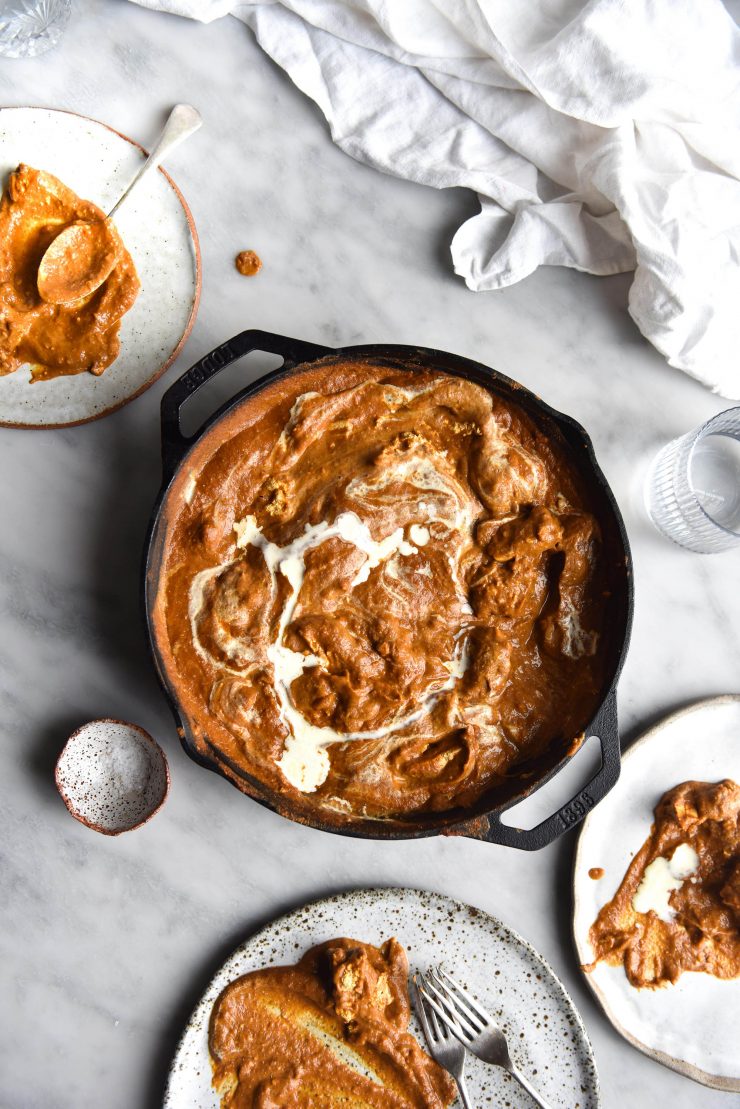
My personal affinity for curry began when I was studying at University. There was an Indian restaurant near our house that made the most amazing food, and their takeaway punctuated many ~important moments~ (mostly me getting dumped) in my young adult life. Shahi paneer was the order of the day for both my sister and I. I loved it so much that I developed a version for my cookbook.
I have shared a recipe for FODMAP friendly shahi paneer, But today, I wanted to share a recipe for a curry that you could make your own. So, allow me to introduce my FODMAP friendly vegetarian curry.
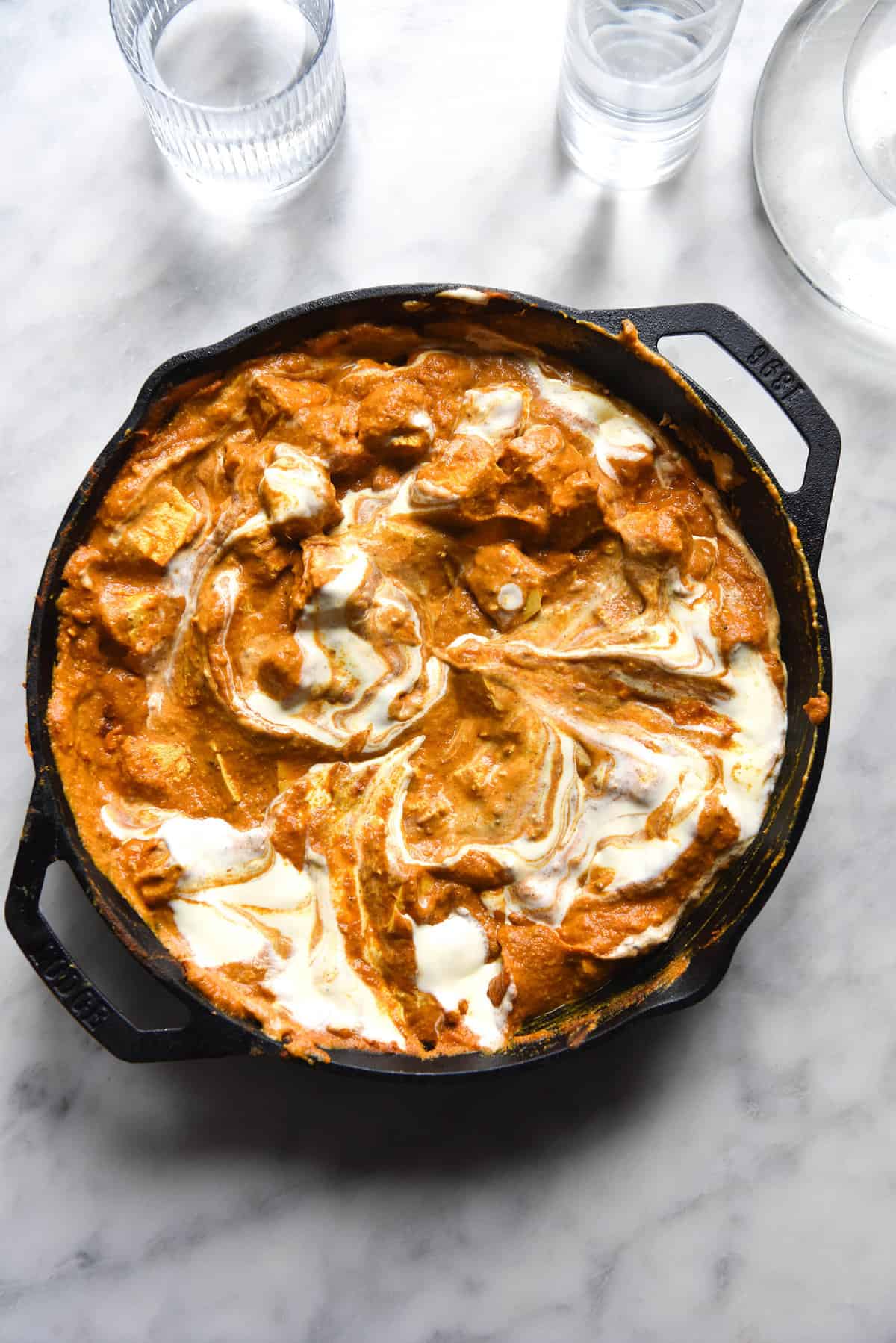
FODMAP friendly vegetarian curry
I know that ‘curry’ is a vague name and I’m sorry. When I started developing the recipe for this curry, I intended for it to be a tofu tikka masala. After making it a couple of times, however, I decided that it needed cardamom. Bon Appetit uses cardamom in their tikka masala, other websites do not. I myself don’t know what strictly constitutes a tikka masala (given that it is British Indian origin) and I don’t want to bastardise a cuisine. So! FODMAP friendly vegetarian curry that is 99% tikka masala and 1% rogue.
This FODMAP friendly vegetarian curry is gluten free, nut free and adaptable to be vegan. It comprises of a sauce base – a whole host of vegetables, cooked together with spices. The curry base is just about the easiest way I can think of to jam a whole bunch of vegetables into a dish. It tastes decadent, authentic, and not at all like your 7-a-day.
The curry is made without any onion or garlic. It uses a combination of spices and aromats to achieve a beautiful gravy without these ingredients.
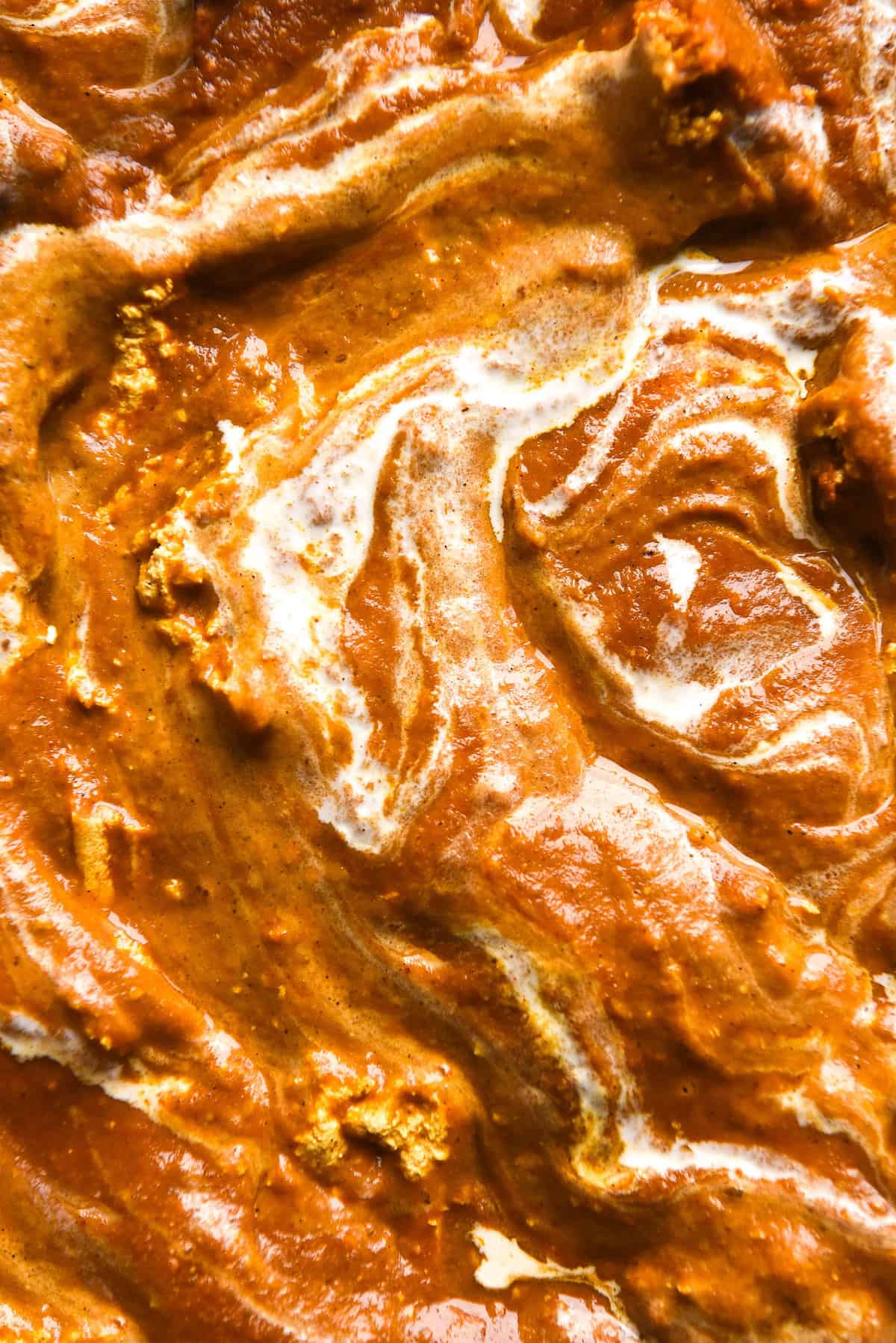
FODMAP friendly vegetarian curry notes
To make this FODMAP friendly vegetarian curry vegan, simply use a plain flavoured oil in place of ghee and either coconut milk or another plant based milk in place of the cream. If you want it to taste as authentic as possible, I recommend using soy milk or a plain flavoured milk as opposed to coconut. Coconut is delicious, but it will add a unique taste.
You can replace the tofu with whatever protein you see fit. However, I’m no expert on cooking other proteins, so you’ll have to figure out the timing for yourself.
You could also omit a protein entirely and load up on vegetables. The choice is yours!
I developed this recipe in 2020 and I found it quite difficult to acquire fenugreek. If you’re in the same boat, just omit it. The truly necessary spices are garam masala, cumin and turmeric. If worst comes to worst, coriander powder and paprika can be omitted. Paprika is mostly for the classic red colour, anyway.
The amchoor (mango powder) is an optional bonus, if you have it. I have read that citric acid is a more common replacement, but honestly you can just add some extra lemon juice.
Kashmiri chilli powder is a mild chilli powder – similar in heat to Aleppo pepper but less smokey. I like it because A) it gives off a lovely red colour and B) it’s the perfect level of heat for a spice wimp like me.
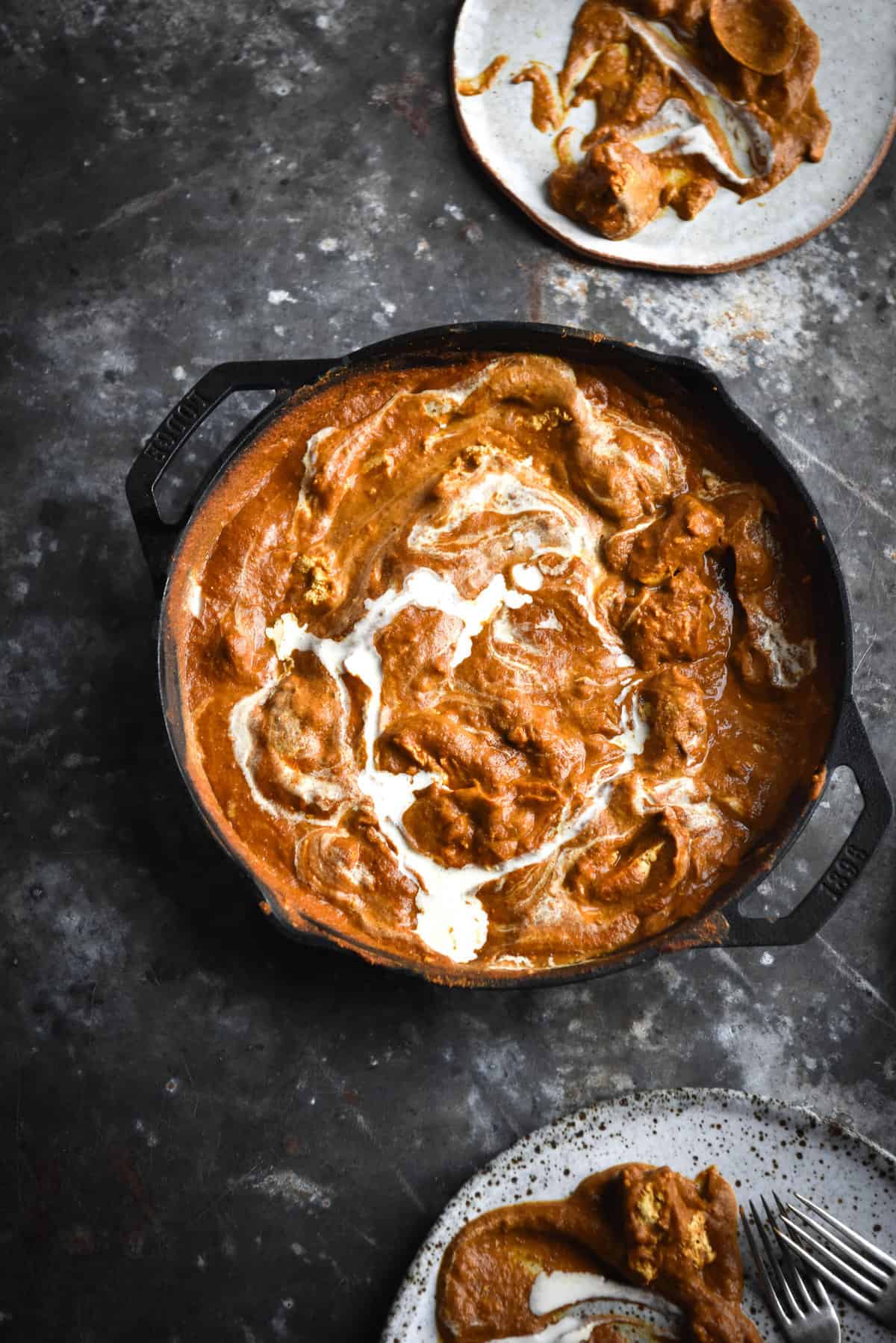
FODMAP notes for your low FODMAP curry
Although this curry doesn’t use onion or garlic, there are a few ingredients worth discussing in this recipe. These FODMAP thresholds are all current as of April 2025.
Fennel (bulb only) is low FODMAP in 75g and up to 144g serves. In 145g serves per person, it contains moderate amounts of fructose. I used it in this recipe originally as a replacement for onion. It has an onion like texture and a sweet, mild flavour. However, these days I like to use a bunch of spring onion greens instead. They give a more bold onion flavour.
A number of years ago now, Monash lowered the FODMAP threshold for red capsicums (red peppers) to 43g per serve. They remain low FODMAP in serves of up to 58g. At 59g, they contain moderate amounts of fructose.
This curry uses 1 small red capsicum and serves 6-8 so is within acceptable fructose thresholds.
Green capsicums/peppers are lower FODMAP than red ones. A low FODMAP serve is 75g and up to 250g, after which it contains moderate fructans. So, one green capsicum is well within FODMAP limits.
I will also note that as of April 2025, FODMAP Everyday lists both red and green capsicum as low FODMAP in up to 750g serves.
More FODMAP notes
Common cabbage is low FODMAP in 75g serves and up to 193g serves. In 194g serves, it contains moderate amounts of fructans. This curry uses 250g.
A few years ago, Monash lowered the threshold for smoked paprika. They still haven’t changed the entry for regular paprika, which remains low FODMAP in 1 teaspoon (2g) serves. FODMAP Everyday app lists paprika as being an eat freely – nil FODMAPs ingredient. They don’t currently have an entry for smoked paprika.
Finally, tomatoes. According to Monash, common tomatoes are low FODMAP in 65g serves. In servings exceeding 75g (approximately 1/2 a tomato) they contain moderate amounts of fructose.
FODMAP Everyday lists common tomatoes as being low FODMAP in servings of up to 83g per person, after which they contain excess fructose. Both measurements can be used as a guide along with your own tolerance levels.
If you are very sensitive to fructose, you could consider replacing the tomatoes with my low FODMAP Nomato sauce.
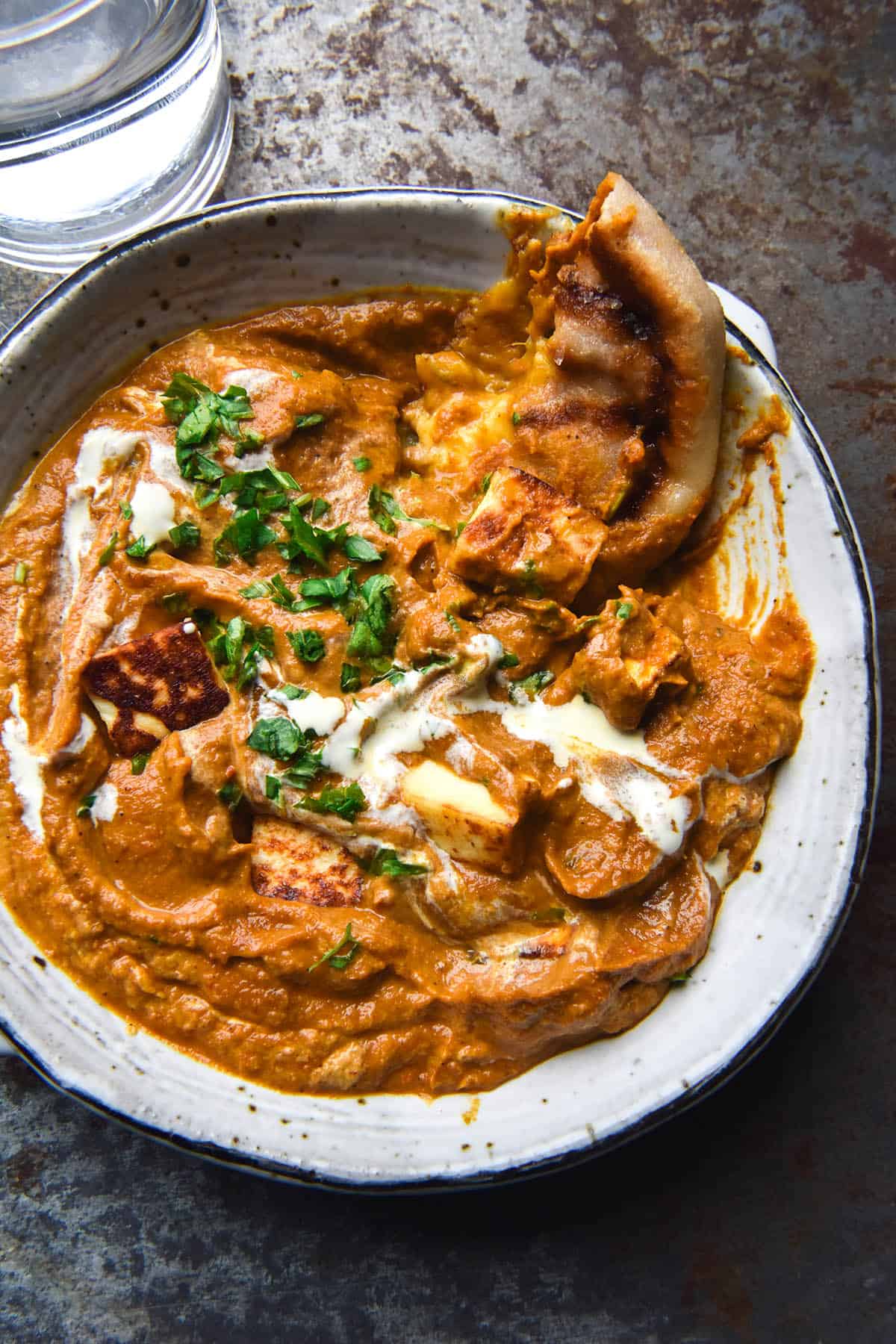
Adding flavour without onion or garlic
I have written a whole article on this topic which you can find here. However, I wanted to briefly discuss this in relation to our low FODMAP curry.
Firstly, you can use my garlic infused ghee recipe for the base of this curry. This adds flavour early on in the piece.
Secondly, use spring onion greens in the curry base to amp up the onion flavour.
As the recipe card discusses, asafoetida is a great flavour enhancer for low FODMAP dishes. It is a powder made from wild fennel that has an onion and garlic like flavour.
Adding loads of ginger is another excellent way to add flavour. The spiciness cooks out, but a base note of flavour remains.
Finally, a new ingredient recently added to Monash’s repertoire. Pickled garlic is deemed to be low FODMAP by Monash in 1 clove or 3g serves. The moderate limit is 28-29g or 10 cloves, which suggests there is some wiggle room. Try it and see what works for you – I have a recipe here.
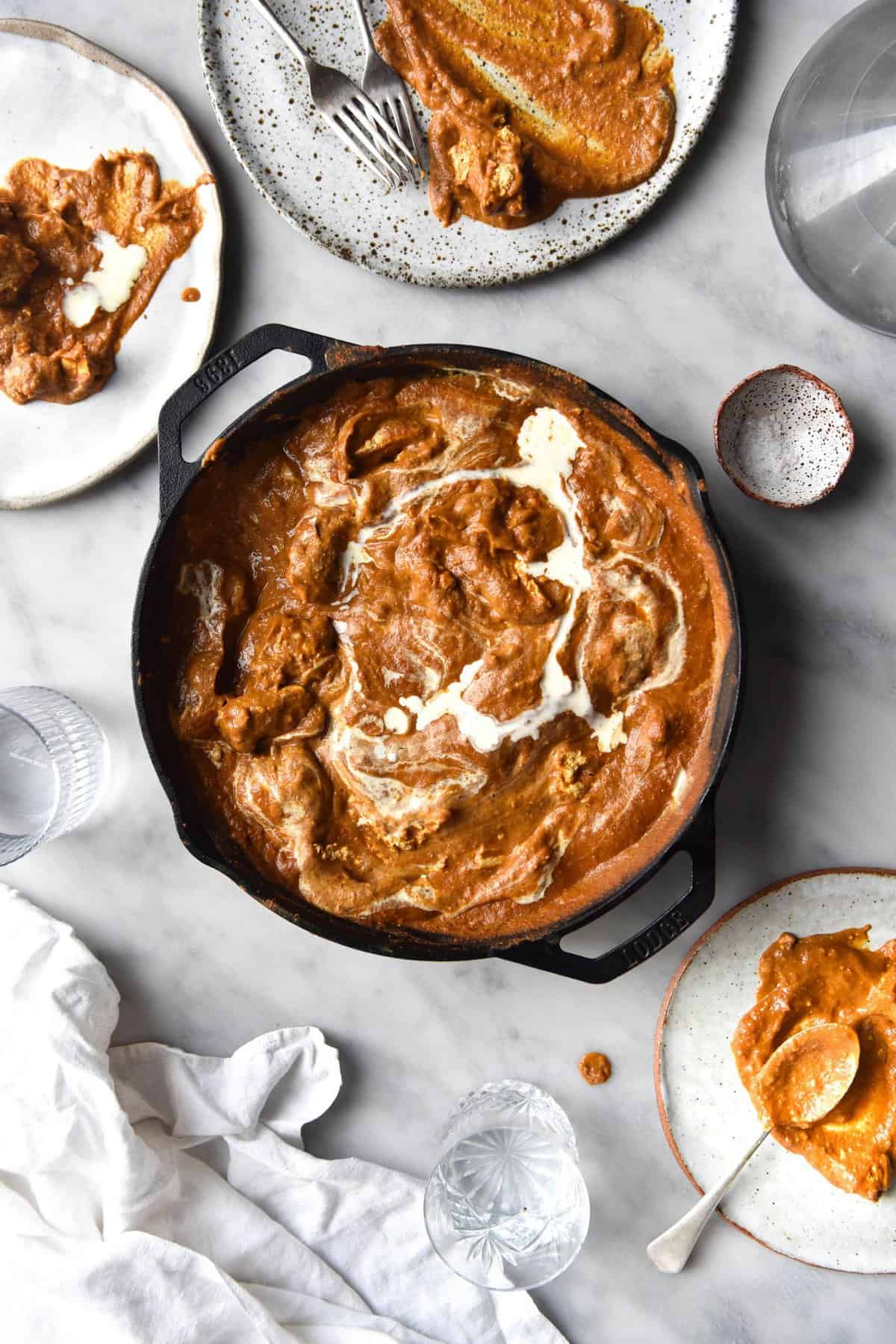
Is rice gluten free?
This might be obvious to those experience in dodging gluten but it is a common question. Yes, rice is naturally gluten free. This includes any variety of rice (brown, black, Jasmine, Arborio) and rice flour. These are all safe to eat on a gluten free diet, and go really well with this curry.
More FODMAP friendly vegetarian Indian recipes
- My low FODMAP shahi paneer
- Gluten free Aloo Paratha
- Homemade lactose free paneer
- Low FODMAP paneer curry
- Cheesy garlicky gluten free naan
- My low FODMAP daal or ‘not quite daal’

FODMAP friendly vegetarian curry
Ingredients
For the curry sauce base
- 60ml (3 tablespoons)* ghee or oil
- 1 large (or 2 small) carrots reasonably finely chopped
- 50g spring onion greens finely chopped
- 40-50 g ginger finely chopped
- 1 small red capsicum chopped
- 1 small green capsicum chopped
- 250 g common cabbage chopped
- 2 large tomatoes chopped
- 2 teaspoons ground garam masala
- 1 teaspoon ground cumin
- 1 teaspoon ground coriander
- 1 teaspoon sweet paprika
- 1/4-1/2 teaspoon Asfoetida (hing) powder, optional (see notes)
- Water to cover (anywhere from 750ml to 1 litre works, it will just determine the thickness of the sauce)
For the curry paste
- 8 cardamom pods or 1/2 – 1 teaspoon cardamom powder
- 1 tablespoon sweet paprika (use 4 teaspoons for NZ, US, UK, Canada and Europe teaspoons)
- 1 tablespoon cumin (use 4 teaspoons for NZ, US, UK, Canada and Europe teaspoons)
- 2 tablespoons garam masala (use 8 teaspoons for NZ, US, UK, Canada and Europe teaspoons)
- 1 tablespoon fenugreek seeds (use 4 teaspoons for NZ, US, UK, Canada and Europe teaspoons)
- 1 tablespoon coriander powder (use 4 teaspoons for NZ, US, UK, Canada and Europe teaspoons)
- 1 teaspoon turmeric powder
- 1 teaspoon Kashmiri chilli (see notes)
- 1-2 teaspoons amchoor optional (see notes)
- 50 g tomato paste
- Juice of 1 lemon
To finish
- 1 x 500 g packet of firm tofu drained
- Whatever low FODMAP vegetables you fancy
- 125-250ml (1/2 – 1 cup)* lactose free full cream (you could also use yoghurt milk or a plant based substitute, see notes
- Seasoning to taste
Instructions
To make the curry sauce base:
- Place the ghee in a very large cast iron skillet, pan or wok over a low-medium heat. Add the and carrots, and cook for 15-20 minutes, stirring intermittently, until soft and caramelised in colour. I like to add some salt here to encourage the vegetables to release their own liquids – this will mean adding less water.
- Add the spring onion greens, ginger, capsicums and cabbage and cook until soft – an additional 10 or so minutes. Add a splash of water whenever the vegetables are sticking and you sense they need it.
- Add the tomatoes and spices for the sauce base and stir to combine. Top with the water, stir and place a lid on. Allow to cook for 15-20 minutes.
- Once the vegetables are completely soft and the mixture is fragrant, set aside to cool. Once sufficiently cool, place the mixture in a high speed food processor and blend until you have a smooth curry gravy.
To make the curry paste:
- Combine all the spices (except for the cardamom seeds) for the curry paste in a bowl or a small blender. If you’re using cardamom powder, you can add it in with the other spices. We’re cooking the cardamom seeds first because they can get lost in the curry paste otherwise. By cooking them in the ghee first, they have more of a chance to become fragrant and flavour the curry.
- In a food processor or a mortar and pestle, add the spices and all remaining ingredients for the curry paste. If you’re using a blender and are having trouble getting it to blend, add a cup or so of the curry base mixture. Blend until smooth.
To finish the curry:
- Wash and reheat the large skillet or wok and return it to the heat. If you like, you can dry fry your tofu over a high heat to develop some texture in the form of crispy edges. If you’re going down this path, fry the tofu in batches and then place on a plate.
- Add the ghee to the skillet and place over a medium heat. If you're using cardamom seeds, add them to the skillet and cook for a minute or two until fragrant. Add the curry paste and fry off for a minute or two until fragrant. Add some curry base to keep it from sticking, if necessary.
- Once the mixture is fragrant, add all the curry base and stir thoroughly to combine. Add the vegetables you fancy in order of how long they will take to cook. Add the tofu last and gently stir to combine.
- Finally, add the cream or milk as you see fit. You might not want to add any, you might add more than the recipe suggests. It’s up to you.
- Allow the curry to cook for 5 or so minutes before adjusting for seasoning, spice level and lemon juice. Continue cooking until all the vegetables are cooked through. You can serve with a swirl of cream on top if you’re feeling fancy.
Notes
- This recipe uses Australian tablespoons and teaspoons. Australian tablespoons are 20ml, whereas tablespoons in many other places are 15ml. Hence the need to add 1 extra teaspoon if you live in a country with 15ml tablespoons.
- Australian teaspoons are 5ml, which is mostly on par with other countries.
- Asafoetida powder is a great way to get some extra onion and garlic like flavour into a dish. Make sure you choose a brand that is gluten free if need be as it is often cut with flour.
- Amchoor is an optional ingredient. I had some on hand and wanted to add it because I love the sourness it brings, but you can really just add more lemon to taste.


Hi! Just wondering how much carrot to use? I couldn’t see it in the ingredient list. Thanks xx
Sorry! Classic me. 1 large or 2 small carrots. I will amend now, thanks for letting me know 🙂
Thank you! So excited to make it, looks amazing ☺️
When and how do you cook the cardamom seeds? Do you cook them in the ghee and then take them out or leave them in the ghee with all the other spices?
Hi Sofia, if you’re using cardamom seeds, add them to the ghee and cook for a minute or so before adding the curry paste 🙂 Leave them in – they’re edible and delicious. Just remember to take them out of the pods, of course
Should I pan fry the tofu before adding it to the curry? Or will it be better just drained and cubed?
Hi Tosha, I generally just throw it in raw. You can pan fry it if you like but it will lose the crispiness as it cooks in the sauce so it doesn’t really make much difference taste wise 🙂
Can this recipe be frozen?
Hi Emily! Yes it can; you should have no issues with freezing the curry 🙂
I appreciate your details. Fodmap is new to me. Could I replace red cabbage with green cabbage in this recipe?
Hi Jennifer,
Common green cabbage and red cabbage have different FODMAPs so I don’t recommend switching them here. The curry has been developed so as not to have too much of one FODMAP from different ingredients.
Red cabbage would also add a different taste and a distinct colour.
If you don’t have it, I recommend the Monash FODMAP app as a guide to the FODMAP content of different foods 🙂
I don’t find fennel in ingredients, yet it is listed in instructions?
Sorry! The recipe used to use some fennel but I swapped it out for carrots and spring onion greens for ease and FODMAPs. Thanks for alertting me, I will update the recipe card 🙂